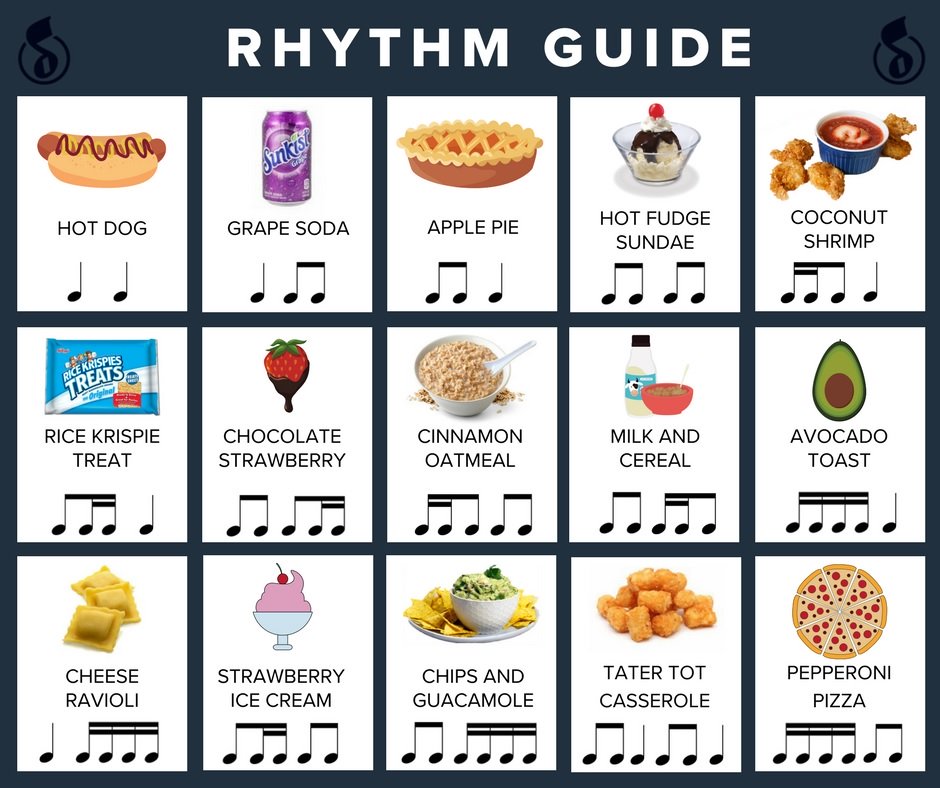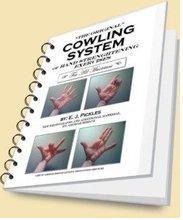
Are you HUNGRY for RHYTHM?
Let's Find Out!
RHYTHM! What a fantastic invention of mankind this is. [Hint: Most systems of teaching music notation have you learn that first, such as this perennial book, below [click it for more info]:
Definitions of R*h*y*t*h*m:
"A strong, regular, repeated pattern of movement or sound."
"The arrangement of sounds as they move through time."
And the derivation of this word is also interesting:
from the Greek, "rhyth-mos": "any regular recurring motion, symmetry"
Now, the ideas of "pattern", and "symmetry" are essential in understanding what it is. Here's one description relating to the word "pattern" in music:
"Pulses caused in music by the occurrence of strong and weak, and/or short and long."
"Symmetry" is also a key idea here, at least in most familiar forms of Western and even a lot of Eastern Music. An obvious example of "symmetry" is the march: "Left-Right-Left-Right-Left-Right-Left-Right-Left-Right-Left-Right-" [as below]
So, take a look at the yummy "food" chart at the top of the page, which displays "short and long" accents, mostly:
Then say [while tapping, if you wish]:
"Grape Soda", "Grape Soda","Grape Soda","Grape Soda","Grape Soda","Grape Soda", etc.
Now, let's try:
"Tater Tot Casserole, Pepperoni Pizza, Milk and Cereal, Avocado Toast"
See? You CAN read rhythms!
Now, let's look at another related term:
"Rhythm" versus "Tempo"
"Tempo" is not the same thing - Tempo refers to the "speed" of a piece of music. like so:
Slow Tempo:
"Grape
---------- So------da, Grape ---------- So------da, Grape ----------
So------da, Grape ---------- So------da, Grape ----------
So------da," [slow tempo]
OR, a faster Tempo:
"Grape-Soda-Grape-Soda-Grape-Soda-Grape-Soda-Grape-Soda-Grape-Soda-Grape-Soda-"
So now that these terms are identified, let's break this down further:
[More Info:]
Here's some data, collected from Wikipedia: [As usual, I did some 'sorting out' of a big undifferentiated pile of ideas and have picked these ones, and inserted some definitions* and edits where needed. See how these work for you.]
"[...] marked by the regulated succession of opposite elements, e.g.: the dynamics [*volume changes] of the strong and weak beat: the played beat and the inaudible but implied rest beat, the long note and the short note.
"As well as perceiving rhythm we must be able to anticipate it. This depends on repetition of a pattern that is short enough to memorize. [*or perceive]
"The alternation of the strong and weak beat is fundamental to the ancient language of poetry, dance and music. The common poetic term "foot" refers, as in dance, to the lifting and tapping of the foot in time. In a similar way musicians speak of an upbeat and a downbeat and of the "on" and "off" beat."
Here's an excellent example of the above: alternating strong and weak, anticipating the beat, etc:
The Wrap-Up:
As we can hear, rhythm all by itself can generate interest and emotion. There is more to this, but the material we've just covered should give you a good start.
For more info on reading and practicing music, please see these pages:
Good Luck!!
THIS "SECRET METHOD" TO INSTRUMENTAL MASTERY HAS BEEN "HIDDEN IN PLAIN SIGHT" FOR OVER A CENTURY!
But now, it has been REDISCOVERED! And YOU can enjoy the amazing benefits of it:
This Method Book Can ABSOLUTELY "Supercharge" YOUR Practice Routine - on ANY Instrument!
Find out more, or:
Buy It NOW On Amazon [Physical Paperback]:
or:
Get the PDF by clicking here:
"I’ve been playing a long time and really want to take my speed and accuracy to the next level! The first lesson...WOW! I’m a believer!!" ~ Will Suddeth, March 2020
And the accolades continue: David Grisman [above] uses "The Original" Cowling System:
DOWNLOAD "THE ORIGINAL COWLING SYSTEM©" -- PDF "E-BOOK" - 70 pages [$22.50 via PAYPAL secure]
THE SOFTCOVER PHYSICAL BOOK IS BACK IN PRINT! - Available at Amazon.
And still more [actual and unsolicited] rave reviews for "The Original" Cowling System:
-----------------
FROM A VIOLINIST:
"The Cowling System © is a set of 12 exercises designed to increase the flexibility and strength of the hand, wrist, and fingers.
"I bought the course in 1978 and have found them to be invaluable.
"I've kept them all these years and still use them to warm up with before playing."
~ Richard Barton posted on VIOLINIST.COM
-----------------
FROM A BASS PLAYER:
?"My fingers actually DO what my brain tells them to do, WITHOUT getting confused."
~ Anthony Jerome Smith, 35-year veteran bass player.
-----------------
FROM A PIANIST:
"In 1976, my teacher gave me his copy of all the exercises, whereupon I made xeroxed pages to put in a binder.
"My teacher was amazed at my progress that in a year I could play, for example, the prelude #17 of Chopin!
~ "RPN58" (from a pianists' discussion board in England, 2006)
-----------------
FROM A GUITARIST:
"I was introduced to the Cowling System © in the 1980's by a violinist in his seventies, who had amazing dexterity on his instrument for HIS age.
"Through the use of the COWLING SYSTEM ©, I went from "amateur" to an "A" level in music in a very short number of years.
"I have been using the exercises continuously since my friend gave them to me and believe me - THEY WORK."
~ Don Wills Guitarist, Great Britain
-----------------
FROM A VIOLINIST:
"I must say I am highly delighted with the way my fingering has improved since I commenced your hand strengthening exercises.
"Recently, I became very depressed about my playing and almost decided to give it up, but now I feel it's a pleasure, thanks to the Cowling System. ©"
~ "THE VIOLINIST" Magazine, December, 1924
I'd love to see YOUR testimonial on this list! If you really do "THE ORIGINAL" COWLING SYSTEM © of Hand Strengthening Exercises", you CAN master and truly enjoy your music!


